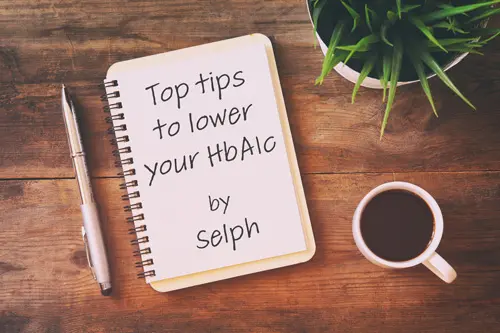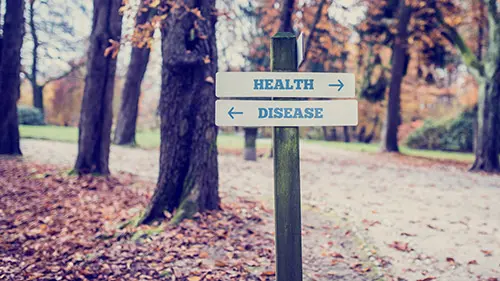Blood Sugar
Blood sugar or blood glucose, plays a vital role in giving your body energy. It fuels everything you do, from thinking and playing to working and exercising. But, when blood sugar levels are too high or too low, they can cause problems that affect your health. Understanding how this works and why it matters is fundamental to good health.
Quick links:

In our blood sugar hub, we’ve put together everything you need to know about blood sugar. We'll talk about what blood sugar levels are, testing your blood sugar, how to optimise your blood sugar levels and why your blood sugar is so important for your overall health.
We’ll also discuss conditions like:
- Diabetes
- Pre-Diabetes
- Low blood sugar (hypoglycaemia)
- High blood sugar (hyperglycaemia)
To top it off we've got helpful charts and calculators so you can convert blood sugar levels from mmol/L to mg/dL and vice versa.
Useful blood sugar tools
Convert blood sugar levels from mmol/L to mg/dL and vice versa with our blood sugar conversion chart.
Use our calculator to convert blood sugar from mmol/L to mg/dL and vice versa.
Blood sugar FAQs
What is blood sugar?
Blood sugar, also called blood glucose, is the concentration (level) of glucose in our blood. It's measured in millimoles per litre (mmol/L) or milligrams per decilitre (mg/dL). Glucose is the main source of energy for our body and brain.
Glucose is found in carbohydrates, which are one of the three main macronutrients in our diet, along with protein and fat. When we eat, our body breaks down carbohydrates into simple glucose which we can absorb into our blood. This travels through our blood and gives our body energy to do things like run, think, work, or play.
However, because glucose is so important for our health, our liver can actually our liver can actually make glucose from other sources, like protein and fat, when we need it. This is called gluconeogenesis and is why people who are on a low- or no-carb diet will still have normal blood sugar levels.
Although low blood glucose is a problem, high blood sugar levels also cause issues. Our body uses hormones to keep our blood sugar levels under tight control. There are quite a few hormones that increase your blood sugar, such as adrenaline, cortisol and glucagon. The main hormone that lowers blood sugar is called insulin.
Why is it important to monitor blood sugar levels?
Your blood sugar levels are a key indicator of your metabolic health. Metabolic health describes how your body is responding to the food you eat, how well your body is using energy, and how well your body is able to store energy. Poor metabolic health is a key cause of common conditions such as heart disease, cancer, dementia, and diabetes.
Most of us don't need to monitor our blood sugar levels all of the time, but having an overall picture of whether your blood sugar levels tend to be high or low helps you understand your metabolic health and future disease risk. Still, it can also be helpful to look at your blood sugar levels in real-time to better understand how they're changing in response to food or exercise.
People with diabetes need to monitor their blood sugar more closely. This is because they are more prone to having very high blood sugar levels or very low blood sugar levels (due to medications) which can be dangerous.
When would I need a blood glucose test?
Checking your blood sugar levels should be a routine part of your general health check-ups. Before the age of 40 you should be having your bloods done every 2 to 3 years. After the age of 40, you should be having your bloods done every year.
However, there are also certain times when you should specifically check your blood sugar levels.
You might need a blood sugar test if you're experiencing certain symptoms. Signs that your blood sugar might be too high or too low include:
- feeling thirsty
- needing to pee more than usual
- feeling extra tired
- blurry vision
You may also need a blood sugar test if you have certain health conditions, like diabetes or pre-diabetes, or if you're at high rik of developing these conditions because of other risk-factors. For example:
- having a family history of diabetes
- being overweight or obese
- having high cholesterol levels
A blood sugar test, like the haemoglobin A1c test shows you how your blood sugars have been across the last 3 months. A high HbA1c can indicate pre-diabetes or diabetes.
What is diabetes?
Diabetes occurs when your body has trouble controlling blood sugar (glucose) levels.
Normally, your body uses a hormone called insulin to help move sugar from your blood into your cells. Cells use this sugar for energy. In diabetes, either your body doesn't make enough insulin (type 1 diabetes) or it becomes resistant to the effects of insulin (type 2 diabetes).
In type 1 diabetes your body can't make insulin. This happens because your immune system attacks the cells in your pancreas that make insulin. Type 1 diabetes usually develops in children or young adults, but it can happen at any age. People with type 1 diabetes need to take insulin every day to keep their blood sugar levels under control.
Type 2 diabetes is when the body still makes some insulin, but the your cells don't respond to it the way they should. This means you need high levels of insulin to keep your blood sugar levels under control. This is called insulin resistance.
Type 2 diabetes tends to develop in adults but it's becoming more common in children. It's associated with being overweight, having high blood pressure and high cholesterol levels. People with type 2 diabetes may be able to control their blood sugar levels with diet and exercise, but some people may need to take insulin or other medications.
Type 1 and type 2 diabetes can both cause high blood sugar. High blood sugar over a long period can lead to problems with your heart, kidneys, and other parts of your body.
What is hypoglycemia?
Hypoglycaemia is when blood sugar drops too low. Symptoms of hypoglycaemia can include:
- Feeling shaky
- Sweating
- Feeling dizzy
- Feeling hungry
- Feeling tired
- Feeling confused
- Heart palpitations
For most people, symptoms of hypoglycaemmia wont appear until their blood sugar drops below 3mmol/L (54mg/dL).
Hypoglycaemia is rare in people without diabetes because the body can more glucose from other sources, like protein and fat, when we need it. However, hypoglycaemia can happen in people with diabetes who take insulin or certain medications to lower their blood sugar levels.
What is hyperglycemia?
Hyperglycaemia is when blood sugar gets too high. You can have hyperglycaemia without having any noticeable symptoms but if your blood sugar levels gets very high you can experience:
- needing to pee a lot
- feeling very thirsty
- dehydration
- confusion
- blurred vision
For a non-diabetic person, a random (non-fasting) blood sugar level over 11mmol/L (200mg/dL) is generally considered hyperglycaemia.
Over the long-term, hyperglycaemia can lead to serious health problems. It can damage your blood vessels and nerves, which can cause problems with your heart, kidneys, eyes, and other parts of your body.
How can I monitor my blood sugar levels?
There are a three main ways to measure blood sugar levels.
You can use a capillary blood glucose meter. This is a small device that measures the amount of sugar in your blood. You can use it at home or in a clinic.
Another way to check sugar is with a continuous glucose monitor (CGM). A CGM is a small sensor that you wear on your skin. It measures your blood sugar in real-time and you can see the results on your phone.
Lastly, you can also do a blood test called haemoglobin A1c (HbA1c). This test measures your average blood sugar levels over the past 2 to 3 months. It can help you see how well your blood sugar is controlled over time. You can take the blood sample for this test at home using a finger-prick and then send it into the lab for analysis.
What is the normal range for blood sugar?
The normal range for blood sugar depends on when you measure it.
Before meals, the normal range for blood is between 3.9 and 5.6mmol/L (70 to 99mg/dL).
Two hours after eating, the normal range for blood sugar is less than 7.8mmol/L (140mg/dL).
To track your average blood sugar over the past 2-3 months, doctors use a test called HbA1c. A normal HbA1c is under 39mmol/mol.
However, for optimal health, you should aim for an HbA1c of 30 - 35mmol/mol (4.9% to 5.4%).
What is the correct blood sugar level?
Blood sugar levels, or blood glucose levels, tell you how much glucose is in your bloodstream. Maintaining these levels within a specific range is crucial for health.
The correct blood sugar level depends on when it is checked. Before meals the correct blood sugar level is between 3.9 and 5.6mmol/L (70 to 99mg/dL). Two hours after eating, the correct blood sugar level is less than 7.8mmol/L (140mg/dL).
What level of blood sugar is dangerous?
Blood glucose levels can become dangerous if they are too high or low.
A blood sugar level below 3mmol/L (54mg/dL) is very low and could be dangerous, particularly in someone who takes medication that lower blood sugar.
The body is generally better at handling high blood sugar levels. However, a blood sugar level over over 14mmol/L (250mg/dL) can certainly be dangerous and lead to significant dehydration and other complications. In the long-term, an average blood sugar level over 6.5mmol/L (117mg/dL) will increase your risk of heart disease, stroke, cancer and dementia.
What are symptoms of high blood sugar?
If you are experiencing high blood sugar or hyperglycaemia, you may feel symptoms such as:
- increased thirst
- dry mouth
- peeing more often than usual
- unexplained weight loss
- fatigue
- blurry vision
- headaches
- tingling or numbness in the hands or feet
- recurring infections such as urinary tract or skin infections
- slow healing of cuts or wounds
What are symptoms of low blood sugar?
If you are experiencing low blood sugar or hypoglycaemia, you may feel symptoms like:
- dizziness
- shaking
- sweating
- hunger
- confusion
- fast or irregular heartbeat (palpitations)
- fatigue
What are the 5 worst food for blood sugar?
When it comes to foods that can spike your blood sugar, the worst will be those that are high in carbohydrates, especially refined carbohydrates. Liquids will also tend to be worse than solids and ultra-processed foods are likely to be worse than whole foods.
The 5 worst foods for blood sugar are:
- Sugar sweetened drinks - e.g. sodas and energy drinks
- Fruit juices
- Breakfast cereals - particularly those with added sugar
- Sugary snacks - e.g. cakes, biscuits, pastries
- White bread
But there's a lot more to your blood sugar-handling than just what you eat. When you eat, what else you eat, the order in which you eat, how well you've slept, how stressed you are and how much exercise you've done all play a role in your blood sugar levels. This is why it can be so helpful to monitor your blood sugar levels in real-time with a continuous glucose monitor (CGM).
Get tips on better health
Sign up to our emails on the better way to better health.
We'll keep you up-to-date with the latest research, expert articles and new ways to get more years of better health.






